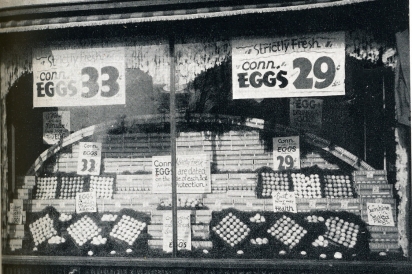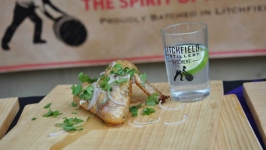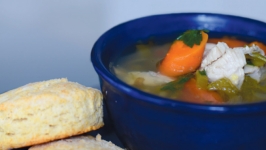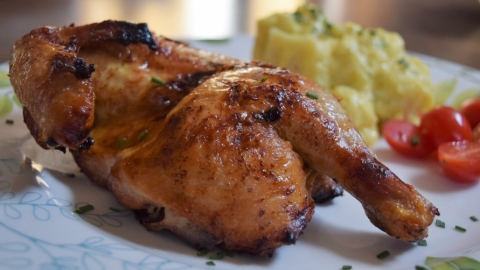How Connecticut Raised the Modern Chicken
In the early 20th century, the poultry industry in Connecticut was thriving. You could not drive into the country without encountering the long rows of coops that signaled a chicken farm. Still remembered by some old-timers, this agricultural feature of our landscape lasted less than a century, but it marks an influential period in our state’s history. Few people today remember, or even know, that the Nutmeg State developed some of the most popular chicken breeds in the world.
Keeping large numbers of chickens in colonial times was something few people did. Chickens and their eggs were delicacies, but in large numbers, the birds were targets for predators and were time consuming to manage. Furthermore, while the chicken breeds of the time had meat that was flavorful, it was rare to raise a bird solely for slaughter. More commonly, hens that were past their egg-laying years were used for their meat, and since they were older, it was almost always tough. Early cookbooks, such as Amelia Simmons’s American Cookery and Catherine Beecher’s American Woman’s Home, recommend potpies for this stringy meat. These culinary prescriptions began to change when breeding techniques transformed the chicken into more than just an egg producer. In the 1860s, a Wilsonville, Connecticut, farmer, Reverend Upham, cultivated the Barred Plymouth Rock chicken, which became popular across the nation. By the early 20th century, chickens had overtaken apples as the state’s main export, and our “egg factories” included over two million hens.
By the 1920s, chicken farms covered the eastern part of the state, spurred by inroads of large numbers of immigrants and refugees—Finns, Jews, French Canadians, and Russians were all encouraged to raise chickens, and they did. Soon, New London and Windham counties produced more poultry than almost any other counties in the United States. After World War II, German and Polish refugees came into the state on visas that allowed them to work in agriculture, joining the booming industry.
Italian immigrant Frank Saglio began working in Glastonbury in 1900 and made enough money by 1917 to buy his own farm, which he called Arbor Acres. His son, Henry, bred a white-feathered bird and entered it in A&P’s “chicken of tomorrow” contest in 1948. It won the best pure-bred category, and the farm began selling these birds to other producers. 10 years later, a full 50% of the “eating chickens” in the world had come from this small Connecticut farm. Frank Perdue called Saglio “the father of the poultry industry” and credited him with helping to take chicken from an expensive treat to the most served protein in American kitchens.
And this commercial-friendly bird was not the only one to be developed in our state. Jewish immigrants Alphonsine and Jacques Makowsky fled the Nazis and settled on Idle Wild Farm in Pomfret to raise African guinea hens. A fire wiped them out in 1949, so Alphonsine, known to her friends as “Tea,” started over, crossbreeding large Cornish gamecocks with various chicken breeds, like the White Plymouth Rock, a descendant of Upham’s variety, and the Malayan Fighting Cock. This resulted in a small bird they called the “Cornish Game Hen,” a white-meat bird that was just the right size for one or two people. The Saturday Evening Post called them “Worth Their Weight in Gold,” and the farm began filling orders, sometimes selling up to 3,000 hens a day to restaurants like the 21 Club in New York City.
Other people began to raise them, including musical comedian Victor Borge, who lived in Southbury, Connecticut, and restaurants as far away as France began serving them. Finally, in the 1960s poultry colossus Tyson Foods took them up, and these Connecticut-bred birds became some of the most popular in the world.
Although Connecticut chicken farmers and breeders revolutionized the industry, today’s consumers are thankfully not relegated to purchasing chicken from one of the nation’s modern “factory farms” that grew out of that period. Today, organically and ethically raised chickens of many varieties are raised all over the state, including Camps Road Farm in Kent or White Gate Farm in East Lyme.










